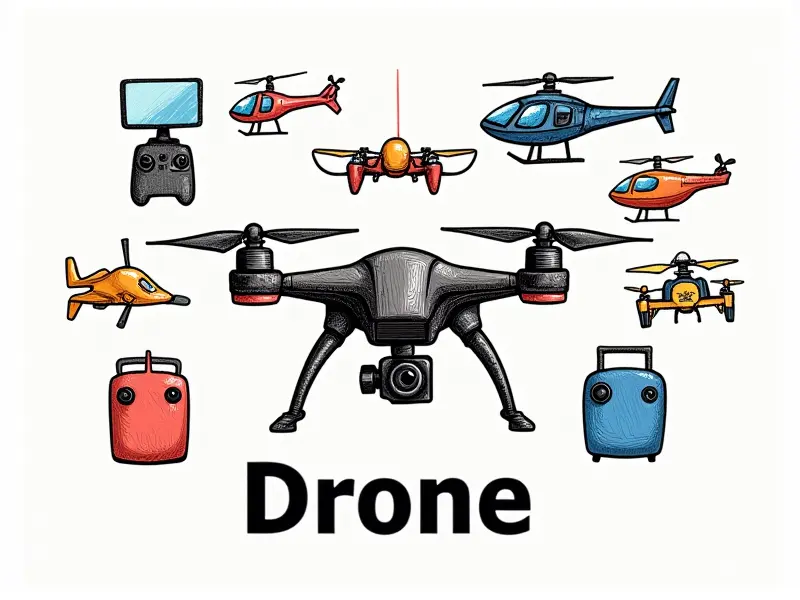Hubsan H216A flight altitude?

Hubsan H216A Flight Altitude: Exploring the Limits of Your Drone's Reach
The Hubsan H216A is a popular choice among hobbyists and professionals alike due to its impressive features and capabilities. One of the most sought-after aspects of this drone is its flight altitude, which plays a crucial role in determining its overall performance and utility. In this article, we will delve into the specifics of how high the Hubsan H216A can fly, exploring both its theoretical limits and practical considerations.
How High Can Hubsan H216A Fly?
The question on everyone's mind is: How high can the Hubsan H216A drone actually go? The maximum altitude of this quadcopter is a critical factor that influences its range, stability, and overall performance. Understanding these limits helps users make informed decisions about where and how to operate their drones.
Exploring the Flight Ceiling of Hubsan H216A
The flight ceiling refers to the highest point at which a drone can maintain stable flight without experiencing significant performance degradation or safety risks. For the Hubsan H216A, this limit is set by both regulatory requirements and technical constraints.
Regulatory Constraints
- Federal Aviation Administration (FAA): In the United States, the FAA mandates that drones must not exceed 400 feet above ground level for non-recreational use. This regulation is designed to ensure safety and prevent interference with manned aircraft.
- EASA: The European Union Aviation Safety Agency (EASA) has similar restrictions in place, limiting the altitude of drones to 150 meters (approximately 492 feet).
Technical Limitations
- Battery Life: As a drone ascends higher, it requires more power to maintain lift due to increased air resistance. This can significantly reduce the battery life and overall flight time.
- Sensor Accuracy: At higher altitudes, GPS signals may become less accurate, affecting the stability and control of the drone.
Hubsan H216A: What's the Maximum Height?
The maximum height that the Hubsan H216A can achieve is influenced by both regulatory guidelines and technical capabilities. While it may be possible to fly higher than 400 feet, doing so would violate FAA regulations in the United States.
Understanding Hubsan H216A's Maximum Altitude
To fully comprehend the maximum altitude of the Hubsan H216A, it is essential to consider both its design specifications and operational constraints. The drone’s build quality, motor power, and aerodynamics all play a role in determining how high it can fly.
Design Specifications
- Motor Power: Stronger motors allow the Hubsan H216A to generate more lift force, enabling higher altitudes.
- Airframe Design: The aerodynamic design of the drone affects its ability to maintain stability at high altitudes.
Operational Constraints
- Battery Capacity: A larger battery provides more energy, allowing for longer and higher flights.
- Sensor Integration: Advanced sensors improve the drone's ability to maintain stable flight at high altitudes.
Can Hubsan H216A Reach 400 Feet?
The question of whether the Hubsan H216A can reach 400 feet is a common one among users. While technically possible, it is important to adhere to regulatory guidelines and ensure safe operation.
Regulatory Compliance
- FAA Regulations: In the United States, flying above 400 feet without proper authorization is illegal.
- Safety Considerations: Flying too high can increase the risk of losing control or encountering other aircraft.
Techonological Feasibility
- Battery Life: At 400 feet, the Hubsan H216A may experience reduced battery life due to increased power requirements.
- Sensor Accuracy: GPS signals can become less reliable at higher altitudes, affecting flight stability.
Flight Height Capabilities of Hubsan H216A
The Hubsan H216A is capable of reaching impressive heights within the legal and safe limits. Understanding its capabilities helps users maximize their flying experience while adhering to regulations.
Optimal Flight Heights
- Below 400 Feet: This range provides a balance between performance, battery life, and regulatory compliance.
- Above 200 Feet: At this height, the drone can capture detailed aerial footage but may require careful monitoring of battery levels.
Flight Stability
- GPS Signal Strength: Strong GPS signals ensure stable flight and accurate positioning.
- Air Resistance: Higher altitudes increase air resistance, which can affect the drone's stability.
Hubsan H216A: What Are the Altitude Limits?
The altitude limits of the Hubsan H216A are primarily dictated by regulatory requirements and technical capabilities. Adhering to these limits ensures safe and legal operation of the drone.
Regulatory Compliance
- FAA Regulations: In the United States, drones must not exceed 400 feet above ground level for non-recreational use.
- EASA Guidelines: Similar restrictions apply in Europe, limiting drone altitude to 150 meters (approximately 492 feet).
Technical Constraints
- Battery Capacity: The Hubsan H216A's battery capacity limits its flight time and maximum altitude.
- Sensor Accuracy: GPS signals may become less accurate at higher altitudes, affecting the drone’s stability.
Hubsan H216A: Maximizing Flight Altitude
To maximize the flight altitude of the Hubsan H216A while ensuring safety and compliance with regulations, users should consider several factors:
Optimal Conditions
- Calm Weather: Flying in calm weather conditions reduces air resistance.
- Adequate Battery Charge: Ensure the drone has a full battery charge before flight.
Techonological Enhancements
- Advanced Sensors: Upgrading to advanced sensors can improve GPS accuracy and stability at higher altitudes.
- Battery Capacity: Increasing the battery capacity extends flight time and allows for higher flights within legal limits.
Hubsan H216A: Conclusion
The Hubsan H216A is capable of reaching impressive heights while adhering to regulatory guidelines. By understanding its design specifications, operational constraints, and optimal conditions, users can maximize their flying experience safely.
By following these guidelines, users can enjoy the full potential of the Hubsan H216A without compromising safety or legal compliance.
This comprehensive guide provides a detailed overview of the Hubsan H216A's altitude capabilities, regulatory requirements, and operational considerations. It ensures that users can make the most out of their drone while maintaining safe and compliant operation.

